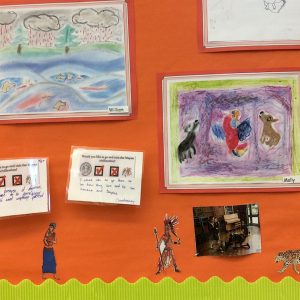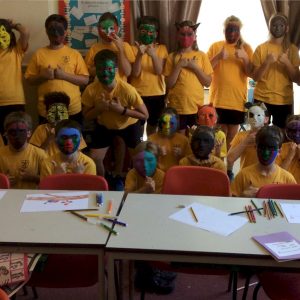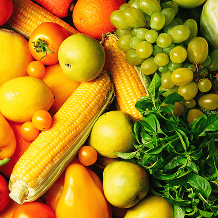

At Sandhurst Primary School we are delighted to have the facilities to offer a fully comprehensive Design Technology curriculum to provide maximum enjoyment in a wide variety of lessons.
Our curriculum provides a huge variety of challenging opportunities that ensure full coverage of the National Curriculum. Furthermore, we intend to enhance the learning experiences further by offering rich and hands on practical experiences. We are mindful that these experiences may be entirely new for some of our children therefore we endeavour to create a supportive and guided learning environment where appropriate.
Children are taught the key skills that are essential to the design process: designing, planning, making and evaluating. Within each year group children have practical opportunities to master each skill throughout the project. Furthermore, children will be taught the knowledge of how to create and improve their designs, with opportunities to reflect on the process and make improvements. We strive to create classroom environments that encourage kindness. Often our projects our require collaborative work which promote listening to each other, engaging in discussions, space for open dialogue and promoting peer collaboration. Thereby, further enhancing our school values of enjoyment and kindness.
We are delighted to have the facilities to offer food technology, which is based around our Cornerstones Curriculum. We have invested time and resources to developing this part of our DT to ensure children have the greatest opportunities to learn about a balanced diet, preparing ingredients, food safety and hygiene, and preparing and cooking basic recipes. This is inclusive to both Key Stage 1 and 2.

At Sandhurst Primary, Art and Design is taught through carefully selected topics as outlined below. The choice of topic ensures full coverage of the national curriculum with ample opportunities for pupils to learn about artist from a wide array of geographical and historical backgrounds. We have several highly skilled members of staff who can provide quality teaching of art and design. They provide support across the whole school to ensure teaching of Art and Design is delivered to the very best standard. This expectation is transferred from teacher to pupil as children are taught to take care and to feel proud of their artwork.
Year 1
| Year 1 | ||
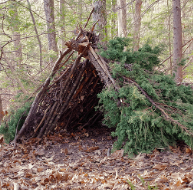 Shade and Shelter Shade and Shelter
This project teaches children about the purpose of shelters and their materials. They name and describe shelters and design and make shelter prototypes. Children then design and build a play den as a group and evaluate their completed product. |
 Taxi! Taxi!
This project teaches children about wheels, axles and chassis and how they work together to make a vehicle move. |
 Chop, Slice and Mash Chop, Slice and Mash
This project teaches children about sources of food and the preparatory skills of peeling, tearing, slicing, chopping, mashing and grating. They use this knowledge and techniques to design and make a supermarket sandwich according to specific design criteria. |
Year 2
| Year 2 | |||
 Remarkable recipes Remarkable recipes
This project teaches children about sources of food and tools used for food preparation. They also discover why some foods are cooked and learn to read a simple recipe. The children choose and make a new school meal that fulfils specific design criteria. |
 Beach Huts This project teaches children about making and strengthening structures, including different ways of joining materials. |
 Cut, Stitch and Join This project teaches children about fabric home products and the significant British brand Cath Kidston. They learn about sewing patterns and using a running stitch and embellishments before making a sewn bag tag. |
 Push and Pull This project teaches children about three types of mechanism: sliders, levers and linkages. They make models of each mechanism before designing and making a greetings card with a moving part. |
Year 3
| Year 3 | |||
 Cook Well, Eat Well This project teaches children about food groups and the Eatwell guide. They learn about methods of cooking and explore these by cooking potatoes and ratatouille. The children choose and make a taco filling according to specific design criteria. |
 Making it Move This project teaches children about cam mechanisms. They experiment with different shaped cams before designing, making and evaluating a child's automaton toy. |
 Greenhouses This project teaches children about the purpose, structure and design features of greenhouses, and compares the work of two significant greenhouse designers. They learn techniques to strengthen structures and use tools safely. They use their learning to design and construct a mini greenhouse. |
|
Year 4
| Year 4 | ||

Fresh Food, Good Food This project teaches children about food decay and preservation. They discover key inventions in food preservation and packaging, then make examples. The children prepare, package and evaluate a healthy snack. |

Functional and Fancy Fabrics This project teaches children about home furnishings and the significant designer William Morris. They learn techniques for decorating fabric, including block printing, hemming and embroidery and use them to design and make a fabric sample. |

Tomb Builders This project teaches children about simple machines, including wheels, axles, inclined planes, pulleys and levers, exploring how they helped ancient builders to lift and move heavy loads. |
Year 5
| Year 5 | ||

Moving Mechanisms This project teaches children about pneumatic systems. They experiment with pneumatics before designing, making and evaluating a pneumatic machine that performs a useful function. |

Eat the Seasons This project teaches children about the meaning and benefits of seasonal eating, including food preparation and cooking techniques. |
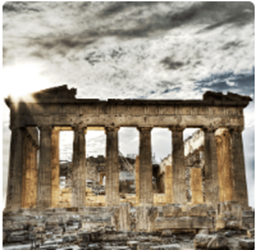
Architecture This project teaches children about how architectural style and technology has developed over time and then use this knowledge to design a building with specific features. |
Year 6
| Year 6 | ||
 Food For Life Food For Life
This project teaches children about processed food and healthy food choices. They make bread and pasta sauces and learn about the benefits of whole foods. They plan and make meals as part of a healthy daily menu, and evaluate their completed products. |
 Engineer Engineer
This project teaches children about remarkable engineers and significant bridges, learning to identify features, such as beams, arches and trusses. They complete a bridge-building engineering challenge to create a bridge prototype. |
 Make Do and Mend Make Do and Mend
This project teaches children a range of simple sewing stitches, including ways of recycling and repurposing old clothes and materials. |
Our curriculum pedagogy is based on four distinct stages (known as the Four Cornerstones) which aim to give clear direction – through a carefully sequenced, interconnected and knowledge-rich planning sequence – for both teaching and learning:
Engage – Develop – Innovate - Express
- Engage in memorable experiences that stimulate children’s curiosity, leading them to ask questions and talk about their prior learning.
- Develop new skills and knowledge by delving deeply into a theme, where children make links, create, explore, make, read and write.
- Innovate by returning to prior knowledge and skills so that children can use and apply these in new contexts (in and out of school).
- Express what has been learned by providing opportunities for children to reflect, test their knowledge and celebrate their achievements.

Following our Cornerstones Curriculum, we use quality-assured lesson resources, knowledge organisers, practical resources and vocabulary to further support children’s developing artistic subject knowledge. The resources contain the essential knowledge and skills that children need for each art and design topic.

Throughout their time spent at Sandhurst Primary School, children will build year on year, their art knowledge and skills. Through a carefully structured curriculum, children will have opportunities to learn new skills and revisit previously taught ones. Teachers will make judgement upon children’s understanding through sketch book recordings, teacher observations, final pieces and classroom dialogue are used to assess the children’s understanding. Our weekly art and design lessons provide children with a relaxing, creative outlet to express their ideas whilst learning to enhance their skillset.
Possible Career Aspirations for the Future
We want our pupils to develop a love for art and as a result remind them, if they continue to aim high they could become an Architect, Fashion designer, Advertising director, Aeronautical engineer, Web developer, Video games designer, Interior designer, Graphic designer, Carpenter or choose from many other exciting professions!

Cornerstones Curriculum
We provide a creative curriculum based around the Cornerstones Curriculum, a nationally recognised approach for delivering outstanding learning opportunities for children.
What is the Cornerstones Curriculum?
The Cornerstones Curriculum is a creative and thematic approach to learning that is mapped to the Primary National Curriculum to ensure comprehensive coverage of national expectations. Our new curriculum will be delivered through Imaginative Learning Projects (ILPs) which will provide a rich menu of exciting and motivating learning activities that make creative links between all aspects of our children’s learning.
We believe children learn better when they are encouraged to use their imagination and apply their learning to engaging contexts. Our new curriculum will provide lots of learning challenges throughout the academic year that will require children to solve problems, apply themselves creatively and express their knowledge and understanding effectively across the curriculum.
Cornerstones also provide a rigorous essential skills framework that outlines the end of year expectations in all subjects. These essential skills are tied to activities and are age related so that staff can track children’s progress and identify their individual learning needs.
How it Works?
Children will progress through four stages of learning in each ILP – Engage, Develop, Innovate and Express. To find out more about these stages please click on the link through to Cornerstones website:
https://cornerstoneseducation.co.uk/why-cornerstones/
Please find downloadable PDF versions of the Information available for the Design and Technology Curriculum.


